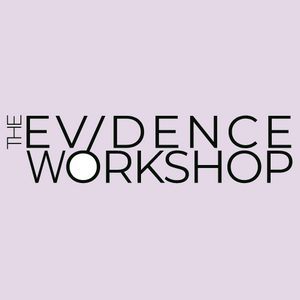
My husband got $50 from work for getting a COVID-19 vaccine. In Maine, proof of vaccination earns you a free fishing or hunting license. The state of Louisiana is offering shots for shots. According to one website, some businesses will give you a free drink if you can prove you’ve been fully vaccinated in the last seven days.
These are just a few examples of the many weird and wonderful incentives that governments and businesses are using to try to increase COVID-19 vaccination rates.
Do incentives work?
That’s what Pol Campos-Mercade and colleagues asked in a randomized controlled trial published in Science earlier this month. Campos-Mercade drew a sample of nearly 3,000 adults in Sweden. Participants were enrolled as soon as their age group was eligible for vaccination. They were randomized to 1 of 2 groups: incentive or control. The incentive group was told they would receive $24 if they got vaccinated with 30 days. The control group was offered no incentive for vaccination. Thirty days later, 75.6% of participants in the incentive group and 71.6% of participants in the control group were vaccinated. The difference was statistically significant, and the authors concluded that modest monetary incentives increase vaccination rates.
This is not the first time Shop Talk has written about data like this. Remember, “Pfizer or Moderna?” and “Your place or mine?” Those examples and the one we present today involve dichotomous variables. These are variables where 2 choices exist, but you can only pick one. Other examples are “pregnant or not” and “vaccinated or not”. When a treatment effect is measured with a dichotomous variable, we can compute benefit increase and number needed to treat to learn how well it works.
The formulae look like this:
ABI = EER – CEE
NNT = 1/ABI§
where
ABI = absolute benefit increase, CER = control event rate, EER = experimental event rate, and NNT = number needed to treat.
In today’s example, the CEE is the percent of people who got vaccinated even when they were not bribed with bucks (71.6%). The EER is the percent of people who got the dose and the dough (75.6%). When we plug and chug, the answer looks like this:
ABI = 75.6% – 71.6% = 4%
NNT = 1/ 0.04 = 25
To sum up, the ABI associated with the monetary incentive is 4%, and the NNT is 25. This means that Swedes are 4% more likely to get vaccinated if you pay them $24. It also means that you’d need to pay 25 Swedes $24 each to get one more vaccinated.
Does the number 25 seem high to you? It did to me. Afterall, over 70% of participants got vaccinated regardless of incentive. It seems like it shouldn’t be that hard to get one more. But it turns out that the high vaccination rate contributes to the high NNT. A lot of Swedes were willing to roll up their sleeve even when no one was coughing up green. We can illustrate this point by repeating the math with the existing vaccine rate in the US, which is about 66% for people ages 12 and up. Let’s assume that money can get the US vaccination rate to 75.6%, like it did in Sweden.
CEE = 66%
EER = 75.6%
ABI = 75.6% - 66% = 9.6%
NNT = 1/0.096 = 10
We’d only have to give 10 Americans $24 to get one more vaccinated. The smaller CEE in this example (66%) brought the NNT down to 10. And that makes sense because effective interventions should induce a lot of change between the control and experiment event rate, meaning that the good thing is much more likely with the intervention than without it. Afterall, if that is not the case, why use the intervention?
That’s all for now. Until next time, check out the resources below. And as always, if you like what we’re doing, consider supporting our work on this site.
§Note that ABI must be in decimal format to compute NNT.
To learn more…
· Read the full article about Sweden’s vaccine incentive program. science.org/doi/10.1126/science.abm0475
· Review a list of vaccine incentives in the US.
nga.org/center/publications/covid-19-vaccine-incentives/.
· Review dichotomous questions like “Pfizer or Moderna?” and “Your place or mine?” buymeacoffee.com/ptworkshop/what-safe-distance
· For more info on EER, CEE, and NNT, see this post.
buymeacoffee.com/ptworkshop/grateful-vaccines
· Check out another issue of Science.
Science is a prestigious outlet for scientific news, commentary, and original research. Its impact factor is 41.8. For context, here is a list of impact factors for other journals you may recognize:
· Archives of Physical Medicine and Rehabilitation 2.7
· Physical Therapy 3.0
· Cell Research 15.6
· Physiological Reviews 27.3
· New England Journal of Medicine 74.7
Impact factor measures how often a journal’s articles are cited. The idea is that important or “high impact” work will be cited more often than low impact work.
The scope of a journal also affects its impact factor. Journals with a broad scope, like medicine, will be cited more often than journals that limit their scope to a specialty like dermatology, gastroenterology, or high-risk neonatology. Journals that cover topics of widespread importance, like global warming, will be cited more frequently than those affecting fewer people and places, like the status of the gypsy moth in central Wisconsin.
High impact journals tend to publish high quality work. Scientists like to publish in prestigious journals; so journals with high impact factors attract high quality manuscripts. But you can find high quality research in journals with low impact factors. This is especially true for highly specialized journals where it is completely possible to publish exceptionally good work in a niche area.
Another nice thing about Science is the articles are short.
Oct. 14, 2021
Copyright (2021) The Evidence Workshop, LLC. All rights reserved.
